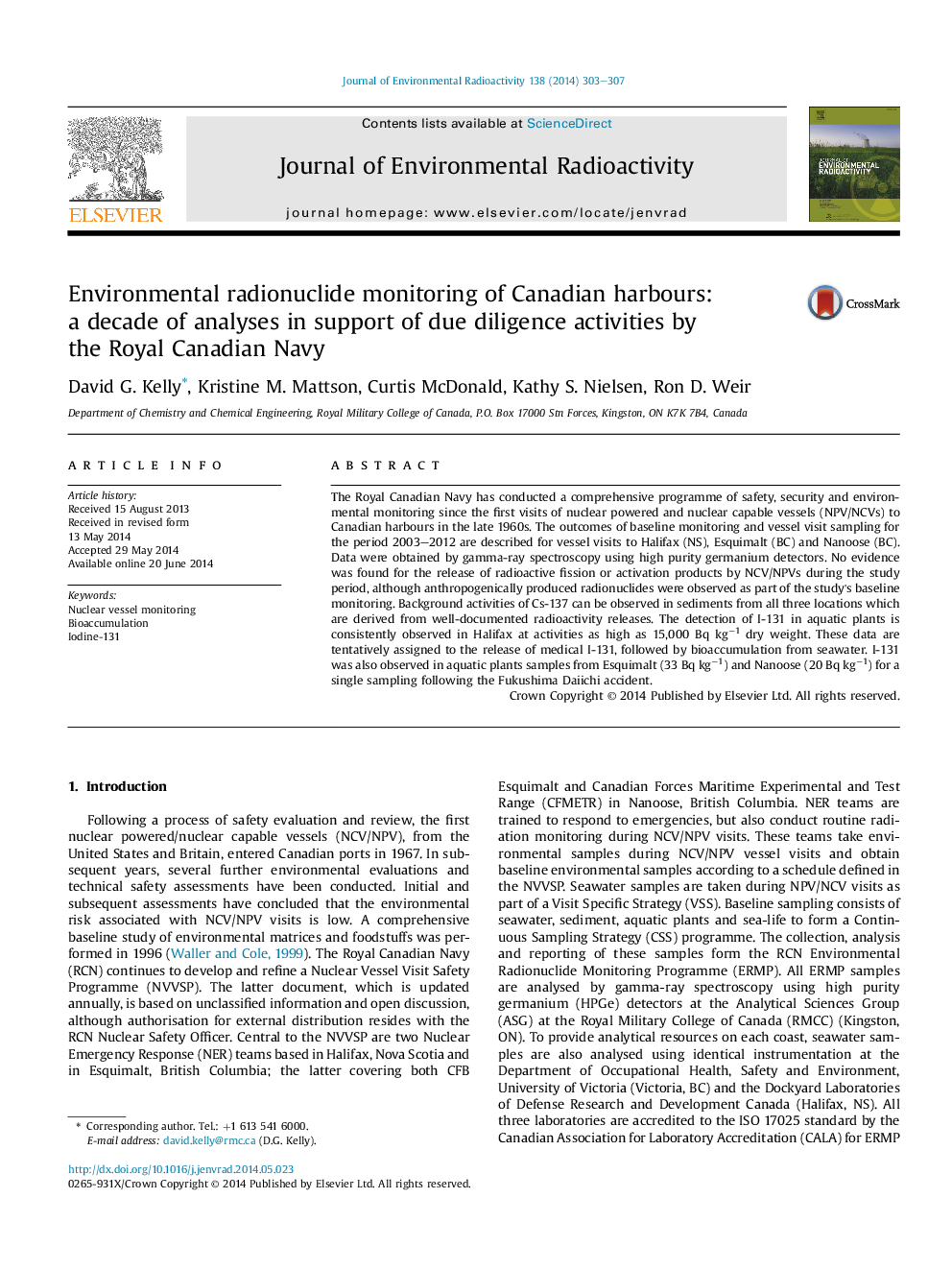| Article ID | Journal | Published Year | Pages | File Type |
|---|---|---|---|---|
| 8082830 | Journal of Environmental Radioactivity | 2014 | 5 Pages |
Abstract
The Royal Canadian Navy has conducted a comprehensive programme of safety, security and environmental monitoring since the first visits of nuclear powered and nuclear capable vessels (NPV/NCVs) to Canadian harbours in the late 1960s. The outcomes of baseline monitoring and vessel visit sampling for the period 2003-2012 are described for vessel visits to Halifax (NS), Esquimalt (BC) and Nanoose (BC). Data were obtained by gamma-ray spectroscopy using high purity germanium detectors. No evidence was found for the release of radioactive fission or activation products by NCV/NPVs during the study period, although anthropogenically produced radionuclides were observed as part of the study's baseline monitoring. Background activities of Cs-137 can be observed in sediments from all three locations which are derived from well-documented radioactivity releases. The detection of I-131 in aquatic plants is consistently observed in Halifax at activities as high as 15,000 Bq kgâ1 dry weight. These data are tentatively assigned to the release of medical I-131, followed by bioaccumulation from seawater. I-131 was also observed in aquatic plants samples from Esquimalt (33 Bq kgâ1) and Nanoose (20 Bq kgâ1) for a single sampling following the Fukushima Daiichi accident.
Keywords
Related Topics
Physical Sciences and Engineering
Energy
Nuclear Energy and Engineering
Authors
David G. Kelly, Kristine M. Mattson, Curtis McDonald, Kathy S. Nielsen, Ron D. Weir,
